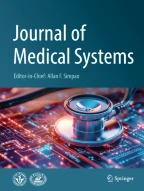Abstract
There is a conflict between Data Envelopment Analysis (DEA) theory’s requirement that inputs (outputs) be substitutable, and the ubiquitous use of nonsubstitutable inputs and outputs in DEA applications to hospitals. This paper develops efficiency indicators valid for nonsubstitutable variables. Then, using a sample of 87 community hospitals, it compares the new measures’ efficiency estimates with those of conventional DEA measures. DEA substantially overestimated the hospitals’ efficiency on the average, and reported many inefficient hospitals to be efficient. Further, it greatly overestimated the efficiency of some hospitals but only slightly overestimated the efficiency of others, thus making any comparisons among hospitals questionable. These results suggest that conventional DEA models should not be used to estimate the efficiency of hospitals unless there is empirical evidence that the inputs (outputs) are substitutable. If inputs (outputs) are not substitutes, efficiency indicators valid for nonsubstitutability should be employed, or, before applying DEA, the nonsubstitutable variables should be combined using an appropriate weighting scheme or statistical methodology.
Similar content being viewed by others
References
Hollingsworth, B., The measurement of efficiency and productivity of health care delivery. Health Econ. 17(10):1107–1128, 2008.
Chern, J. Y., and Wan, T. T. H., The impact of the prospective payment system on the technical efficiency of hospitals. J. Med. Syst. 24(3):159–172, 2000.
Sahin, I., and Ozcan, Y. A., Public sector hospital efficiency for provincial markets in Turkey. J. Med. Syst. 24(6):307–320, 2000.
Kirigia, J. M., Emrouznejad, A., and Sambo, L. G., Measurement of technical efficiency of public hospitals in Kenya: using data envelopment analysis. J. Med. Syst. 26(1):39–45, 2002.
Wan, T. T. H., Lin, B. Y. -J., and Ma, A., Integration mechanisms and hospital efficiency in integrated health care delivery systems. J. Med. Syst. 26(2):127–143, 2002.
Harrison, J. P., Coppola, M. N., and Wakefield, M., Efficiency of federal hospitals in the United States. J. Med. Syst. 28(5):411–422, 2004.
Hajialiafzali, H., Moss, J., and Mahmood, M., Efficiency measurement for hospitals owned by the iranian social security organisation. J. Med. Syst. 31(3):166–172, 2007.
Kirigia, J., Emrouznejad, A., Cassoma, B., Asbu, E., and Barry, S., A performance assessment method for hospitals: the case of municipal hospitals in Angola. J. Med. Syst. 32(6):509–519, 2008.
Nayar, P., and Ozcan, Y., Data envelopment analysis comparison of hospital efficiency and quality. J. Med. Syst. 32(3):193–199, 2008.
Lee, K. H., Yang, S. B., and Choi, M., The association between hospital ownership and technical efficiency in a managed care environment. J. Med. Syst. 33:307–315, 2009. doi:10.1007/s10916-008-9192-2.
Hollingsworth, B., and Street, A., The market for efficiency analysis of health care organizations. Health Econ. 15:1055–1059, 2006.
Beattie, B. R., and Taylor, C. R., The economics of production. Wiley, New York, 1985.
Farrell, M. J., The measurement of productive efficiency. J. R. Stat. Soc., A. 120(3):253–290, 1957.
Charnes, A., Cooper, W. W., and Rhodes, E., Measuring the efficiency of decision making units. Eur. J. Oper. Res. 2(6):429–444, 1978.
Banker, R. D., Charnes, A., and Cooper, W. W., Some models for estimating technical and scale inefficiencies in data envelopment analysis. Manag. Sci. 30(9):1078–1092, 1984.
Färe, R., Grosskopf, S., and Lovell, C. A. K., Production frontiers. Cambridge University Press, Cambridge, 1994.
Cooper, W. W., Seiford, L. M., Tone, K., and Zhu, J., Some models and measures for evaluating performances with DEA: past accomplishments and future prospects. J. Prod. Anal. 28(3):151, 2007.
Fried, H. O., Lovell, C. A. K., and Schmidt, S. S., The measurement of productive efficiency and productivity growth. Oxford University Press, Oxford, 2008.
Casu, B., and Thanassoulis, E., Evaluating cost efficiency in central administrative services in UK universities. Omega. 34(5):417–426, 2006.
Banker, R. D., Chang, H., Janakiraman, S. N., and Konstans, C., A balanced scorecard analysis of performance metrics. Eur. J. Oper. Res. 154(2):423–436, 2004.
Holvad, T., Hougaard, J. L., Kronborg, D., and Kvist, H. K., Measuring inefficiency in the Norwegian bus industry using multi-directional efficiency analysis. Transportation. 31(3):349–369, 2004.
Cooper, W. W., Seiford, L. M., and Tone, K., Data envelopment analysis: a comprehensive text with models, applications, references and DEA-Solver software. Springer, New York, 2007.
Bogetoft, P., and Hougaard, J. L., Efficiency evaluations based on potential (non-proportional) improvements. J. Prod. Anal. 12(3):233–247, 1999.
Charnes, A., Cooper, W. W., Lewin, A. Y., and Seiford, L. M., Data envelopment analysis: theory, methodology and application. Kluwer Academic, Boston, 1994.
Gupta, S. R., Wojtynek, J. E., Walton, S. M., Botticelli, J. T., Shields, K. L., Quad, J. E., and Schumock, G. T., Pharmacy staffing and productivity. Am. J. Health. Syst. Pharm. 64(22):2323–2324, 2006.
Sikka, V., Luke, R. D., and Ozcan, Y. A., The efficiency of hospital-based clusters: evaluating sustem performance using data envelopment analysis. Health Care Manage. Rev. 34(3):251–261, 2009.
Pedhazur, E. J., and Schmelkin, L. P., Measurement, design, and analysis: an integrated approach. Lawrence Erlbaum Associates, Hillsdale, 1991.
Wooldridge, J. M., Econometric analysis of cross section and panel data. MIT, Cambridge, 2002.
Greene, W. H., Econometric analysis, 6th edition. Prentice Hall, Upper Saddle River, 2008.
Author information
Authors and Affiliations
Corresponding author
Rights and permissions
About this article
Cite this article
Barnum, D.T., Walton, S.M., Shields, K.L. et al. Measuring Hospital Efficiency with Data Envelopment Analysis: Nonsubstitutable vs. Substitutable Inputs and Outputs. J Med Syst 35, 1393–1401 (2011). https://doi.org/10.1007/s10916-009-9416-0
Received:
Accepted:
Published:
Issue Date:
DOI: https://doi.org/10.1007/s10916-009-9416-0
